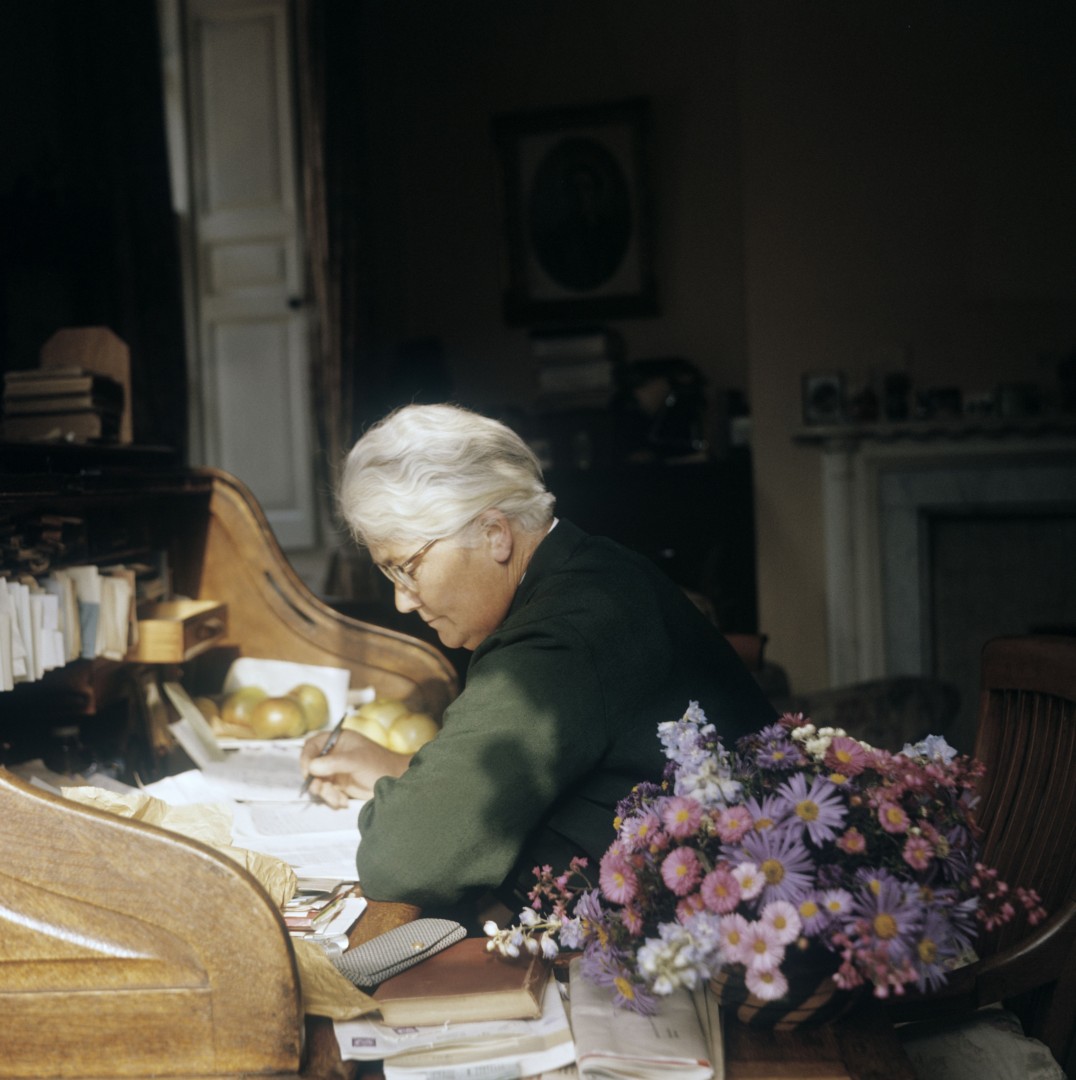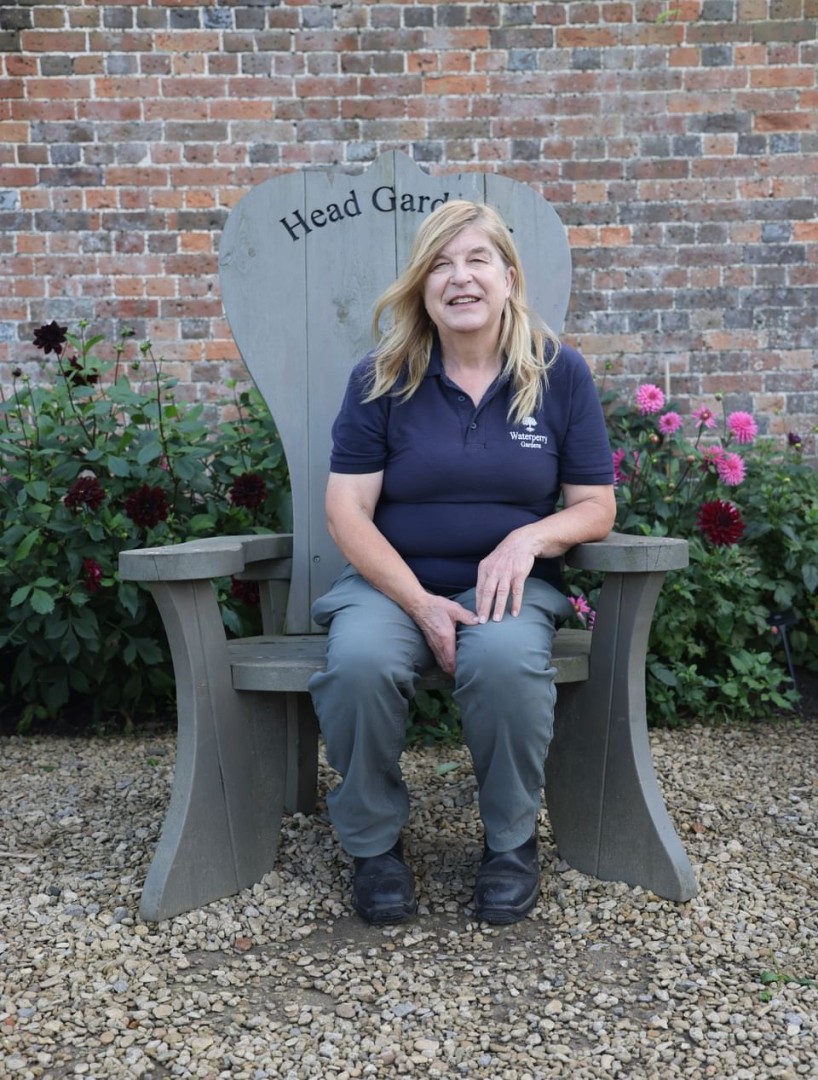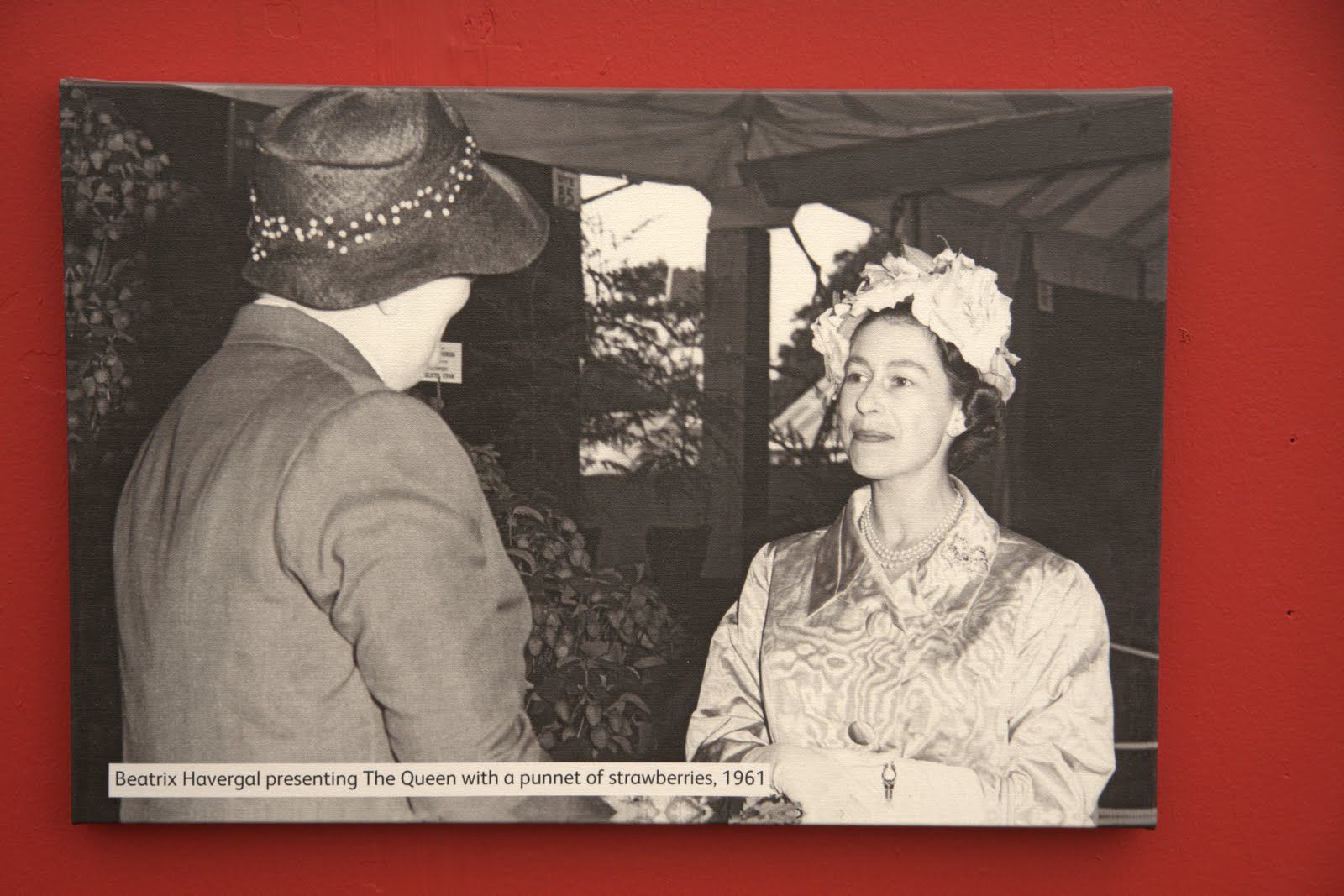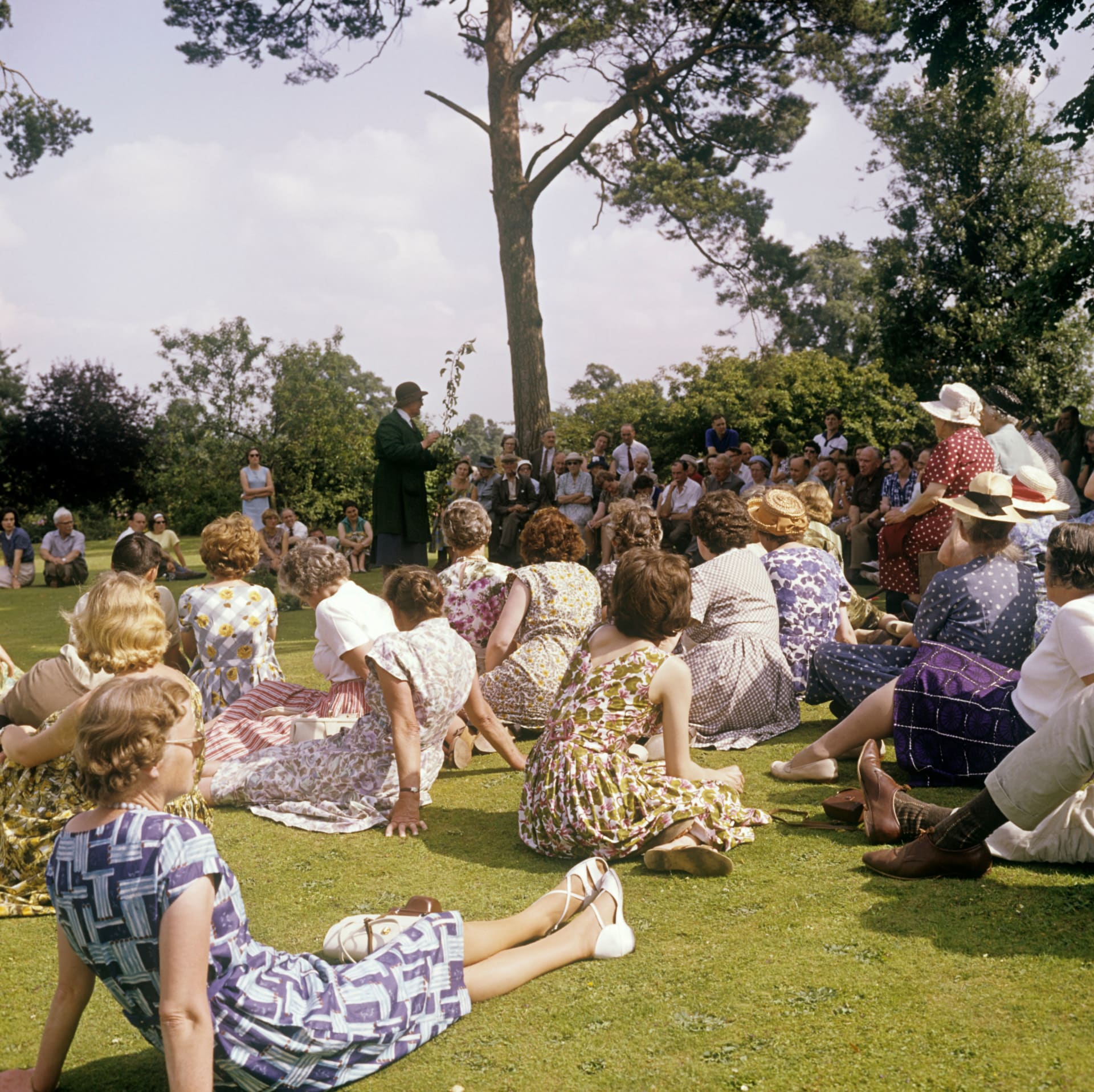Gardening at the start of the 20th century was often seen as a male occupation and it was only after the outbreak of World War I in 1914 that it became more acceptable for women to work on the land and care for gardens.
 It was during the early part of the war that the woman who would later go on to set up the Waterperry School of Horticulture, Beatrix Havergal, made an official promise as a jobbing gardener with the Women’s Country War Agricultural Committee to “work on the land whenever called upon to do so.” This promise led to a lifetime involvement, encouraging and motivating women to work in horticulture. Now, some 44 years after Miss Havergal’s death, many parts of the gardens she created at Waterperry are cared for by Head Gardener Pat Havers who has lived in the village all her life and played in Waterperry Gardens as a small child.
It was during the early part of the war that the woman who would later go on to set up the Waterperry School of Horticulture, Beatrix Havergal, made an official promise as a jobbing gardener with the Women’s Country War Agricultural Committee to “work on the land whenever called upon to do so.” This promise led to a lifetime involvement, encouraging and motivating women to work in horticulture. Now, some 44 years after Miss Havergal’s death, many parts of the gardens she created at Waterperry are cared for by Head Gardener Pat Havers who has lived in the village all her life and played in Waterperry Gardens as a small child.
Beatrix Havergal started work at just 15, having been required to leave school in order to help support her family by bringing in a weekly wage. When her family’s finances improved in 1917, she undertook a two-year course at the Thatcham Fruit and Flower Farm near Newbury, passing her RHS exams with honours in 1920. Her first job as a ‘qualified’ gardener was to create a garden from a field for a local couple who had purchased a new house at Cold Ash. Beatrix’s work came to the attention of Miss Olive Willis, the founder and head of the Downe School for Girls, who invited herto become the School’s Gardener. It was whilst working as part of the staff at Downe School, that Beatrix, or Trix as she was known, was inspired to become a teacher herself and impart her horticultural knowledge to female students.
She had befriended Avice Saunders, a young housekeeper who also worked at the school, and the pair evolved the idea of starting a horticultural course for girls. By 1927, they had gained the financial support of their respective parents, enabling them to rent a cottage and two acres of land on the edge of the Pusey Estate near Faringdon. It was their intention to instruct the girls about all hands-on requirements of working in horticulture. The vegetables and fruit which they grew was sold at Swindon Market in order to bolster the school’s finances and they soon gained a reputation for growing quality produce. With student numbers also increasing by 1932 Beatrix and Avice realised that they needed larger premises.
Owned by Magdalen College, Waterperry House was available for Miss Havergal and Miss Saunders to lease, and they moved in on the 31 August 1932. The property was sold to Miss Havergal some 16 years later and the two women became owners of a large three-storey house with a ballroom, library, and large rooms which were used by the students as common rooms.
 As the Waterperry Horticultural School grew in popularity, attracting more students year on year, many of the people who lived in Waterperry village had links with the House and Gardens. Amongst those was current Head Gardener, Pat Havers whose family have lived in Waterperry village for many years. “My mother was amongst the team of local ladies who worked in the gardens at Waterperry. In those days much of the produce grown was sold at the shop in Oxford’s Covered Market which came about as a direct result of growing food during World War II and wanting to make it accessible for people who lived in the city. I was a small child when my mother was employed at Waterperry, and at just three years of age, the gardens became my playground.
As the Waterperry Horticultural School grew in popularity, attracting more students year on year, many of the people who lived in Waterperry village had links with the House and Gardens. Amongst those was current Head Gardener, Pat Havers whose family have lived in Waterperry village for many years. “My mother was amongst the team of local ladies who worked in the gardens at Waterperry. In those days much of the produce grown was sold at the shop in Oxford’s Covered Market which came about as a direct result of growing food during World War II and wanting to make it accessible for people who lived in the city. I was a small child when my mother was employed at Waterperry, and at just three years of age, the gardens became my playground.
I would spend hours running through the beds, asking the gardeners questions about their work. Joan Stokes who was Beatrix Havergal’s cousin spent many hours working the glasshouses, and I would help her whenever I was allowed. I was just four when Miss Havergal introduced me to a group of visitors as ‘her youngest student’ and indeed, the students who were attending the courses often would share their new-found knowledge with me.”
Pat also learned more about horticulture spending time working alongside her mother growing vegetables in their own back garden at home in Waterperry. Their neighbour was also a keen gardener and Pat would often be given clumps of plants from the neighbour’s garden. When as a young child Pat was taken into the gardens at Waterperry, rather than falling asleep in a pram she would often find a wheelbarrow was equally comfortable.
Growing up around formidable but kindly Beatrix Havergal also taught Pat to mind her Ps and Qs: “Beatrix was very tall and statuesque and one of her ‘looks’ would instil good behaviour. She was also famous for her style of dress,” Pat recalls. “She would wear knee breeches and knee stockings, along with sturdy leather handmade shoes from Duckers in Oxford’s Turl Street. Beatrix’s top layer was a green smock worn over a shirt, always with a smartly knotted tie. A felt hat completed the picture or, if the weather were hot, she would don a Panama hat. It was only when she went to RHS Chelsea Flower Show, that a smart tweed suit would be her apparel.”
 Pat continues, “I have many wonderful childhood memories of the great ladies of Horticulture, like Beatrix Havergal, Valerie Finnis, Mary Spiller, Joan Stokes and Jean Manger. Thanks to Miss Havergal’s great interest in growing award-winning Sovereign’strawberries one of my most exciting childhood adventures was when, at the age of 9 or 10, my mother took me to the RHS Chelsea Flower Show for us to visit Miss Havergal’s famous strawberry display. Over the years, she won 15 RHS Gold Medals for her Sovereign strawberries and each year a punnet of these delicious fruits would be given to Queen Elizabeth II. I also remember the happy times I, along with other children from the village, spent enjoying the wonderful Christmas tea parties that Beatrix and Avice held in the ballroom. Beatrix would play the piano as we played musical chairs followed by having fun finding Father Christmas by opening the doors around the ballroom to find out where he was. Everyone associated with Waterperry – including those people living in the village – was immensely proud of Miss Havergal, who was awarded MBE by the Queen in 1960 for her services to Education in the Field of Horticulture along with the RHS Veitch Cross the same year.”
Pat continues, “I have many wonderful childhood memories of the great ladies of Horticulture, like Beatrix Havergal, Valerie Finnis, Mary Spiller, Joan Stokes and Jean Manger. Thanks to Miss Havergal’s great interest in growing award-winning Sovereign’strawberries one of my most exciting childhood adventures was when, at the age of 9 or 10, my mother took me to the RHS Chelsea Flower Show for us to visit Miss Havergal’s famous strawberry display. Over the years, she won 15 RHS Gold Medals for her Sovereign strawberries and each year a punnet of these delicious fruits would be given to Queen Elizabeth II. I also remember the happy times I, along with other children from the village, spent enjoying the wonderful Christmas tea parties that Beatrix and Avice held in the ballroom. Beatrix would play the piano as we played musical chairs followed by having fun finding Father Christmas by opening the doors around the ballroom to find out where he was. Everyone associated with Waterperry – including those people living in the village – was immensely proud of Miss Havergal, who was awarded MBE by the Queen in 1960 for her services to Education in the Field of Horticulture along with the RHS Veitch Cross the same year.”
When Avice Saunders died in 1970, Miss Havergal decided she could no longer continue running the Horticultural School and put the property up for sale. The House and Garden were sold to the School of Philosophy and Economic Science and although the Waterperry Horticultural School ladies ceased, the Gardens were allowed to continue with various courses held each year.
Although Pat’s working life started elsewhere, she still lived in the village and when she suddenly became a single mother with two daughters to care for, she took a part-time job at Waterperry’s café. A few years later she was asked to work in the garden and eventually, when the Head Gardener’s role became available, her team who put her forward for the position. They knew she was the best person for the job.
“Although I have never undertaken any formal training, I am a ‘homegrown’ Head Gardener. I have developed an intuitive understanding of the gardens particularly maintaining Beatrix’s famous and complicated three season borders for which Waterperry Gardens are famous. Nothing gives me more job satisfaction than seeing the pleasure our eight acres of gardens give to visitors and fellow gardeners alike. Throughout the seasons there is always something spectacular to see and care for. The thing that drives my passion for horticulture is wanting to keep the gardens looking lovely and keeping up the traditions that I have been taught by the great ladies who have gone before me.”
The ornamental gardens, gift shop, gift barn, gallery and museum are open to visitors seven days per week only closed between Christmas and New Year. To find out more visit waterperrygardens.co.uk.
Photos of Pat Havers by Sophie Dolder
The images of Miss Havergal and the grounds are with thanks to Waterperry Gardens









